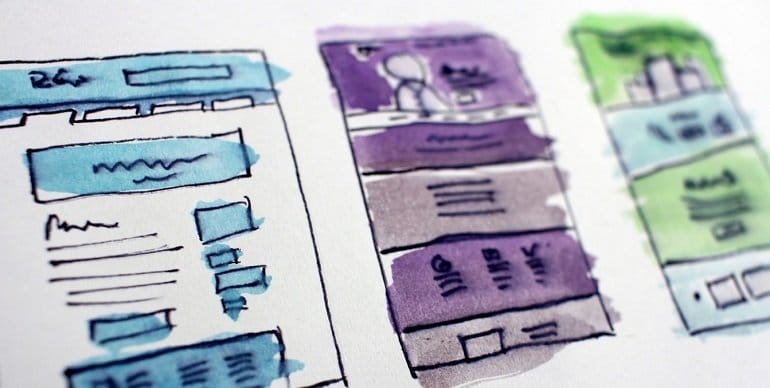Everyone wants their website to be popular, but there’s tons of competition among WordPress sites. Considered the most popular content management system (CMS) on the planet, it now runs 34% of the entire internet and has over half of the CMS market.
So, how do you make your website stand out from the crowd? The obvious answer is to make your site as fast as possible. Hands down, this is one of the best things you can do for your WordPress site to boost your rankings and get some kudos from your visitors.
But, surely there’s more. Your WordPress site can load at lightning speed and still not perform well.
5 Quick Ways to Improve User Experience for WordPress
Here are five more quick ways you can improve your WordPress site and boost the user experience at the same time.
1. Simplify Navigation
When visitors get to your site, it shouldn’t be a struggle to find what they need. Make your navigation as simple as possible. Divide your categories clearly and keep everything consistent.
Every element of your navigation should be a clickable link. Also, make sure that you use accurate navigation titles. Several ways that you can improve your WordPress navigation include:
- Use a visual hierarchy. Users should be able to visually grasp your site’s navigation structure. You can use things like font, size, and color to differentiate these elements.
- Optimize the placement of your menu. When it comes to navigation, where you put the menu on your page is vital. Most users expect it at the top of the screen. Avoid hiding it behind a button, except on mobile devices.
- Consider using breadcrumbs. Breadcrumbs at the top of your WordPress site let visitors know where they are within your hierarchy. It might look something like Home / Category / Post Name. If you’re using the Yoast SEO plugin, you can enable this feature for your site from the plugin’s dashboard.
While WordPress alone does an admirable job with its baked-in navigation, your theme might provide more options, and certain plugins, like Max Mega Menu, are also available.
2. Disable Hotlinking
You can take every measure possible to speed up your site and then the actions of others can slow it down to a crawl. When people “hotlink” to images on your website, this can cause WordPress performance issues.
Hotlinking happens when another website directly links to one of your images. If you paid for your images, this could even be illegal if the person linking hasn’t paid for a license.
There are several ways to prevent hotlinking in WordPress. Plugins are available, but most are considered buggy. You may be able to accomplish this through your CDN (some include hotlink protection).
The best way is to simply add a line of code to your .htaccess file. Open your .htaccess through File Explorer, FTP, or a plugin. Then, enter this code:
/* Prevent image hotlinking in WordPress */
RewriteCond %{HTTP_REFERER} !^$
RewriteCond %{HTTP_REFERER} !^http(s)?://(www\.)?yourwebsite.com [NC]
RewriteCond %{HTTP_REFERER} !^http(s)?://(www\.)?google.com [NC]
RewriteCond %{HTTP_REFERER} !^http(s)?://(www\.)?twitter.com [NC]
RewriteCond %{HTTP_REFERER} !^http(s)?://(www\.)?facebook.com [NC]
RewriteCond %{HTTP_REFERER} !^http(s)?://(www\.)?put-other-websites-here.com [NC]
RewriteRule \.(jpg|jpeg|png|gif)$ - [F]This code prevents websites other than yours, Google, Twitter, Facebook, and any other ones you list from accessing your site’s images.
Since the .htaccess is an important and sensitive file, you have to be extra careful when editing it. Remember to do a backup of your original .htaccess file before making any changes.
3. Choose a Good Host
Part of delivering the best user experience is having a website that is consistently online. This comes from having a reliable web host, which can also help with your website speed.
Fortunately, there are tons of hosting companies that specialize in helping people with WordPress sites. If you’re not sure which way to turn, you can do some research and compare.
You can use a hosting company comparison tool to look for suitable hosting. For example, you can check out popular managed WordPress hosting services and compare pricing, discounts, and ratings for each. The site also provides the pros and cons of each web host such as uptime percentages, locations of servers, and availability of support.
If you’re not happy with your current web host, you can always switch. Fortunately, nearly all hosting companies will provide you with free site migration services so that you can make a seamless transition from one host to another.
4. Prioritize Site Security
Your visitors aren’t going to want to stick around if your WordPress site isn’t secure. More consumers today are concerned about their online privacy and data breaches for good reasons.

In addition to choosing the right hosting company, here are several things you can do to make security a priority for your WordPress site and its visitors:
- Implement SSL. Single Sockets Layer (SSL) should be the standard today. Google doesn’t look kindly on sites that don’t have SSL, and a certificate provides encryption and security for visitors.
- Select the right theme. There are plenty of free WordPress themes that are fine as well as many that are suspect. Choose one that is from a reputable developer.
- Use a strong password. Choosing passwords like “12345” or “password” is a quick way to get your site hacked. Likewise, avoid using “admin” as your username. These simple changes can help secure your site.
- Install a WordPress Security Plugin. It can be challenging and time-consuming to continually check your website for issues. A security plugin like Sucuri can take care of this for you. Its features include file integrity monitoring, activity auditing, malware scanning, security hardening, notifications, and even a firewall.
5. Create Scannable Content
Unless you’re writing about physics or some other narrow topic where your audience is looking for long-form paragraphs, your content should be scannable and simple to read.
Today’s website visitors hate landing on a page that is a wall of words. If you have this, you’re going to lose more visitors than you keep.
In academic circles, we’re taught to write in long-form paragraphs that consolidate a thought. This doesn’t hold true on the web. Two to three sentences in a paragraph are the max for an easily readable website experience.
When you format a WordPress page to be scannable, here are several tips to follow:
- Use a lot of subheads. Use H3 headings for your subheads to break up your content.
- Isolate important sentences. If the thought is important, give it its own paragraph.
- Use images. Insert images, graphs, and infographics to emphasize content without using more words.
A positive user experience should be one of your goals for a successful website. This involves attracting new customers as well as retaining the ones you already have. These five tips will help you create the positive attitudes and emotions surrounding your website that will help your business achieve its goals.

